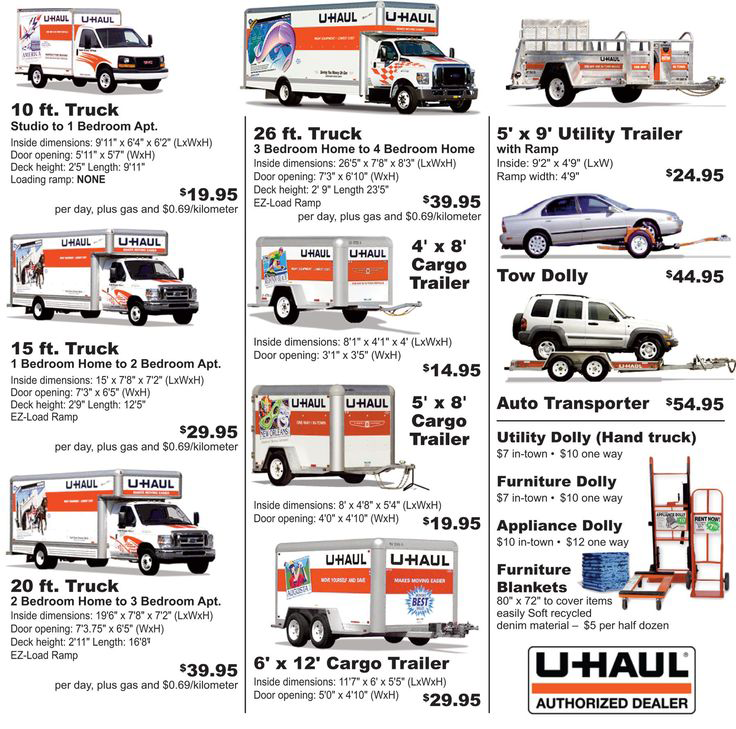General Motors Car Brands: A Comprehensive Guide to an Automotive Empire
General Motors Car Brands: A Comprehensive Guide to an Automotive Empire cars.truckstrend.com
General Motors (GM) stands as a titan in the global automotive industry, a conglomerate whose reach extends across continents and touches virtually every segment of the vehicle market. From rugged workhorses to opulent luxury sedans, and from family-friendly SUVs to cutting-edge electric vehicles, GM’s diverse portfolio of car brands has shaped the automotive landscape for over a century. Understanding General Motors car brands is not merely about listing names; it’s about appreciating a strategic masterclass in market segmentation, innovation, and enduring legacy. This article will delve into the heart of GM’s brand strategy, exploring its current powerhouses, acknowledging its rich history, and peering into its electrifying future.
The Foundation of an Empire: Understanding General Motors
General Motors Car Brands: A Comprehensive Guide to an Automotive Empire
General Motors Company, often simply referred to as GM, was founded in 1908 by William C. Durant. What began as a holding company for Buick soon expanded to encompass a multitude of fledgling and established automotive manufacturers, rapidly assembling a formidable roster of brands. This multi-brand strategy allowed GM to target different economic classes and consumer preferences, a pioneering approach that set the standard for the modern automotive industry. Today, GM continues this legacy, leveraging distinct brand identities to cater to a vast spectrum of needs, ensuring a significant presence in a highly competitive global market. The importance of GM’s brand portfolio lies in its ability to offer a comprehensive range of vehicles, foster brand loyalty, and adapt to evolving consumer demands and technological advancements.
The Pillars of Power: General Motors’ Current Core Brands
GM’s current strategy focuses on a leaner, more efficient brand portfolio, prioritizing quality, innovation, and market relevance. The core brands operating today each serve a unique purpose and demographic.
Chevrolet: The Heartbeat of America (and Beyond)
Chevrolet, often affectionately known as "Chevy," is arguably GM’s most iconic and widespread brand. It embodies versatility, offering a vehicle for nearly every budget and lifestyle. From the economical Malibu sedan and the popular Equinox and Traverse SUVs to the rugged Silverado pickup truck (a perennial best-seller) and the legendary Corvette sports car, Chevrolet covers a vast spectrum.
- Key Focus: Mass market appeal, reliability, value, and a broad range of passenger cars, trucks, and SUVs. Chevrolet aims to be the accessible choice for families, tradespeople, and enthusiasts alike.
- Innovation: Chevrolet has been at the forefront of GM’s electric vehicle push with models like the Bolt EV/EUV and the upcoming Silverado EV and Blazer EV, demonstrating its commitment to future mobility.
- Practical Advice: If you’re looking for a dependable vehicle with a wide array of options, strong dealer support, and competitive pricing, Chevrolet is an excellent starting point. It offers a balance of features, performance, and practicality.

GMC: Professional Grade, Premium Experience
GMC (General Motors Truck Company) shares many platforms with Chevrolet but distinguishes itself with a more upscale, "professional grade" aesthetic and feature set. While Chevrolet focuses on broad appeal, GMC targets customers seeking a more refined, rugged, and premium experience in their trucks and SUVs.
- Key Focus: Premium trucks and SUVs, emphasizing robust capability with enhanced comfort, design, and technology. GMC models often feature more distinctive styling, higher-quality interior materials, and advanced standard features compared to their Chevrolet counterparts.
- Product Line: Popular models include the Sierra pickup (a direct competitor to the Silverado, but often positioned higher), the Acadia, Terrain, and Yukon SUVs.
- Emerging Innovation: GMC is home to the revolutionary Hummer EV, an all-electric supertruck and SUV that resurrects the iconic Hummer nameplate under a new, environmentally conscious guise, showcasing extreme off-road capability and cutting-edge technology.
- Practical Advice: For buyers who need the utility of a truck or SUV but desire a step up in luxury, styling, and standard features without reaching full luxury brand pricing, GMC offers an appealing blend of capability and refinement.


Buick: Affordable Luxury, Quiet Comfort
Buick holds a unique position within the GM portfolio, serving as the bridge between mainstream and luxury. It targets consumers who appreciate quiet comfort, elegant design, and premium features without the steep price tag often associated with traditional luxury brands. In recent years, Buick has streamlined its lineup, focusing almost exclusively on SUVs.
- Key Focus: Quiet, comfortable, and stylish SUVs with an emphasis on refined driving dynamics and upscale interiors. Buick appeals to a demographic that values a serene cabin, smooth ride, and sophisticated design.
- Product Line: Current popular models include the Enclave, Envision, and Encore GX, all SUVs catering to different size requirements.
- Market Position: Buick has found significant success in China, where it is often perceived as a full luxury brand, reinforcing its global appeal.
- Practical Advice: If you’re seeking a comfortable, well-appointed SUV for daily commuting or family trips, and prioritize a quiet ride and refined aesthetics over aggressive performance or overtly flashy luxury, Buick provides excellent value in the near-premium segment.
Cadillac: The Standard of the World
Cadillac is General Motors’ undisputed luxury flagship. For decades, Cadillac has been synonymous with American luxury, pioneering features and setting benchmarks in comfort, technology, and performance. Today, Cadillac is undergoing a significant transformation, embracing electrification and high-performance vehicles to redefine modern luxury.
- Key Focus: High-end luxury vehicles, cutting-edge technology (like Super Cruise hands-free driving), sophisticated design, and exhilarating performance. Cadillac aims to compete directly with global luxury giants like Mercedes-Benz, BMW, and Audi.
- Product Line: Notable models include the full-size Escalade SUV (a cultural icon), the XT4, XT5, and XT6 crossovers, and performance-oriented sedans like the CT4-V and CT5-V Blackwing.
- Future Vision: Cadillac is leading GM’s "all-electric future" with models like the Lyriq SUV and the ultra-luxury Celestiq, showcasing GM’s most advanced EV technologies and design philosophies.
- Practical Advice: For those who demand the pinnacle of American luxury, advanced technology, bold design, and a commanding presence on the road, Cadillac offers a compelling array of sedans and SUVs, with an exciting future in electrification.
BrightDrop: The Future of Commercial Deliveries
While not a traditional "car brand" for consumers, BrightDrop represents GM’s strategic move into the burgeoning electric commercial delivery and logistics market. Launched in 2021, BrightDrop offers electric vans (like the Zevo series) and electric pallets designed to make last-mile deliveries more efficient and sustainable.
- Key Focus: Electric commercial vehicles and intelligent logistics solutions for businesses.
- Importance: This brand highlights GM’s commitment to diversifying its portfolio beyond consumer vehicles and capitalizing on the growing demand for electrified commercial fleets.
A Glimpse into History: Iconic Brands of the Past
GM’s history is rich with brands that, while no longer in production, left an indelible mark on automotive culture. Understanding these defunct brands provides context to GM’s evolution and strategic decisions.
- Pontiac: Known for performance and sporty styling (e.g., GTO, Trans Am). Phased out in 2010 after GM’s 2009 bankruptcy.
- Oldsmobile: One of America’s oldest automotive brands, known for innovation and mid-range luxury. Discontinued in 2004.
- Saturn: Launched in 1985 with a "different kind of car company" philosophy, focusing on no-haggle pricing and customer service. Discontinued in 2010.
- Hummer (Original): Known for its military-derived, large, off-road vehicles. Discontinued in 2010 but reborn as the electric Hummer EV under GMC.
- Saab: A quirky Swedish brand known for innovation and safety, briefly owned by GM (1990-2010) before its eventual demise.
The discontinuation of these brands was often a result of market shifts, brand overlap, economic downturns, and a strategic move to streamline operations and focus resources on core profitable brands.
Strategic Vision: GM’s Electrified Future and Innovation
General Motors is heavily invested in an "all-electric future," pledging to offer 30 new global electric vehicles by 2025 and aiming for an all-electric lineup by 2035. This ambitious goal is underpinned by:
- Ultium Platform: GM’s flexible battery and motor architecture that will power a wide range of future EVs, from compact cars to large trucks. This modular system allows for scalable battery packs and motor configurations, providing efficiency and cost benefits.
- Super Cruise: GM’s advanced hands-free driving assistance system, available on many Cadillac models and expanding to Chevrolet, GMC, and Buick vehicles, showcasing a commitment to autonomous technology.
- BrightDrop: As mentioned, this commercial EV venture is a key part of GM’s broader electrification strategy, extending beyond passenger vehicles.
This strategic pivot addresses critical considerations for the future of mobility: environmental sustainability, evolving consumer preferences for technology and connectivity, and intense competition from both traditional automakers and new EV startups.
Choosing the Right GM Brand for You: Practical Advice
Navigating the GM portfolio requires considering your specific needs, budget, and priorities:
- Define Your Needs: Do you need a spacious family SUV, a capable pickup truck for work, an efficient commuter, or a luxurious statement vehicle?
- Set Your Budget: GM offers options from entry-level mainstream (Chevrolet) to premium luxury (Cadillac). Be realistic about what you can afford for purchase and ongoing ownership costs.
- Prioritize Features: Are advanced safety features, infotainment technology, fuel efficiency, or raw power most important to you? Each brand emphasizes different aspects.
- Consider Lifestyle: An off-road enthusiast might lean towards a GMC Hummer EV or a Chevrolet Colorado ZR2, while a city dweller might prefer a Chevrolet Bolt EV or Buick Encore GX.
- Test Drive: Always test drive multiple models from different GM brands that fit your criteria. Feel how they handle, assess interior comfort, and experience the technology firsthand.
- Research Reliability and Resale Value: While GM has made significant strides in quality, it’s wise to check recent reliability ratings and typical resale values for specific models you’re considering.
- Explore Electrification: If you’re ready for an EV, GM offers a growing range across Chevrolet, GMC, and Cadillac, with varying ranges and charging capabilities.
Challenges and Solutions
GM, like all major automakers, faces challenges:
- Legacy Perceptions: Overcoming historical perceptions regarding quality or design, particularly in comparison to foreign competitors.
- Transition to EV: Educating consumers and building out charging infrastructure to support the massive shift to electric vehicles.
- Supply Chain Disruptions: Managing global supply chain issues (e.g., semiconductor shortages) that impact production.
GM addresses these by investing heavily in new technology (Ultium, Super Cruise), refreshing vehicle designs, emphasizing rigorous quality control, and building a robust EV ecosystem.
General Motors Car Brands: Price and Market Positioning Overview
Here’s a generalized overview of GM’s current primary passenger car brands, their target markets, and typical price ranges. Please note that specific model pricing can vary widely based on trim, options, and location, and are subject to change.
| Brand | Target Market / Focus | General Price Range (USD – Entry to High-End) | Key Focus |
|---|---|---|---|
| Chevrolet | Mainstream consumers, families, work, performance enthusiasts | $25,000 – $80,000+ | Value, broad appeal, diverse lineup (sedans, SUVs, trucks, sports cars) |
| GMC | Consumers seeking premium, capable trucks and SUVs | $35,000 – $110,000+ | "Professional Grade," upscale utility, enhanced features, rugged luxury |
| Buick | Buyers seeking quiet comfort, refined design, affordable luxury | $28,000 – $55,000+ | Refined SUVs, comfort, elegant styling, near-luxury experience |
| Cadillac | Luxury market, performance enthusiasts, tech-forward buyers | $45,000 – $150,000+ | American luxury, cutting-edge technology, performance, premium design |
| Hummer EV | Niche luxury off-road/performance EV segment | $90,000 – $110,000+ | Extreme capability, electric supertruck/SUV, iconic design |
Note: BrightDrop is excluded as it is a commercial vehicle brand, not a consumer car brand, and its pricing is typically business-to-business.
Frequently Asked Questions (FAQ) about General Motors Car Brands
Q1: How many car brands does General Motors currently own for consumer vehicles?
A1: General Motors primarily focuses on four main consumer car brands in North America: Chevrolet, GMC, Buick, and Cadillac. Globally, they also have a significant presence with brands like Baojun and Wuling in China, often through joint ventures.
Q2: What are GM’s luxury car brands?
A2: Cadillac is GM’s flagship luxury brand. Buick is positioned as an "affordable luxury" or "near-premium" brand, offering a step up in refinement and features without the full luxury price tag.
Q3: Is Hummer still a GM brand?
A3: Yes, the Hummer nameplate has been resurrected as the Hummer EV, an all-electric supertruck and SUV sold under the GMC brand. It is no longer a standalone brand as it was in its original form.
Q4: What is GM’s strategy for electric vehicles (EVs)?
A4: GM has an ambitious "all-electric future" strategy, aiming to offer 30 new global EV models by 2025 and transition to an all-electric lineup by 2035. This is primarily powered by their modular Ultium battery and motor platform, which will underpin vehicles across all their brands, including Chevrolet (Bolt EV, Silverado EV), GMC (Hummer EV), and Cadillac (Lyriq, Celestiq).
Q5: Are GM cars reliable?
A5: GM has made significant improvements in reliability in recent years. While past perceptions may linger, current models generally receive competitive reliability ratings from independent organizations like J.D. Power and Consumer Reports. Reliability can vary by specific model, so it’s always advisable to check recent reviews for the particular vehicle you’re interested in.
Q6: Where are General Motors vehicles manufactured?
A6: GM has manufacturing plants all over the world, including a significant number in the United States, Canada, Mexico, China, and South Korea. Many vehicles sold in North America are assembled in North American plants, though parts and components may be sourced globally.
Conclusion: A Legacy Forged, A Future Electrified
General Motors’ car brands represent a sprawling, dynamic empire built on a century of innovation, adaptation, and a deep understanding of consumer needs. From the broad appeal of Chevrolet to the refined utility of GMC, the quiet luxury of Buick, and the cutting-edge sophistication of Cadillac, GM offers a vehicle for nearly every aspiration. The company’s strategic pivot towards an all-electric future, underpinned by the revolutionary Ultium platform and advanced technologies like Super Cruise, demonstrates its commitment not just to maintaining its legacy but to leading the charge into the next era of automotive mobility. Understanding GM’s diverse brand portfolio is to understand a significant chapter in automotive history and a powerful force shaping its future.





